This post is also available in:  Deutsch (German)
Deutsch (German)
My alarm clock rings at 4:30. Yesterday the Captain said that we would take the pilot onboard at 5:00. I want to witness the docking manoeuvre and get up early.
I look out of the window. Lights! There is the city, Walvis Bay, my destination. They are the first lights on land since Tenerife. Tenerife – somehow it seems like an eternity to me, so full were the days since then with experiences.
A quarter of an hour later, I’m up on the bridge. The Captain, Chief Officer and helmsman are already there. The helmsman is a sailor in real life. Whenever we arrive and depart, he is standing at the small steering wheel. Otherwise, he does the usual sailor’s work.
We drive very slowly. The illuminated buoys, which indicate the waterway into the harbour, come closer and closer. On one side they shine red, on the other green. At the very end, in the port itself, there is also a red and green light. When the two signals are on top of each other, one knows that one has the perfect course.
From time to time, the Captain gives the helmsman a direction which he repeats and then executes.
Punctually at 5:00, we have reached the first buoys of the fairway. The boat with the pilot comes along already. The Chief Officer goes down to receive the man.
We’re already in the bay of Walvis Bay. The lighthouse of Pelican Point is behind us. To our right, we see some big ships moored in full light.
The pilot comes to the bridge. It is a short, slightly overweight man who is entirely out of breath, from the many stairs. He takes command.
Every once in a while, he says something like “one eight two.” The helmsman repeats “One eight two” and about half a minute later the helmsmen confirms that the vessel is now at one eight two, i.e. heading towards 182°.
The pilot has recovered from climbing stairs and goes out on the balcony for a smoke. The Chief Officer brings him a coffee. Every few minutes, the course is corrected. “One eight one”. “One eight one” … “We’re on one eight one.”
A few minutes later, two tugs are waiting for us. Actually, they are one and a half tugs, because one is tiny.
The Captain asks the pilot for permission to moor the tugs to the ship. The pilot gives his okay.
Pierre comes to the bridge, too. Together we stand in a corner where we don’t disturb anyone and watch.
The closer we get to the harbour, the slower the ship becomes. It is only driven forward by momentum. We pass a haven for fishing boats, then a tanker, later three dry docks.
We’ll dock on the port side, so the steering console on the port balcony is being prepared. The Chief Officer takes over the control with a joystick. The helmsman is allowed to leave.
The pilot bends over the railing and gives orders. The Chief Officer repeats them and executes them.
Together they steer the ship parallel to the quay wall. We approach it by the centimetre. The Lines Men in yellow warning vests are already waiting. There are also Lines Women.
Our crew throws a bright orange line, the end of which is weighted down, ashore. The Lines Men pick it up and pull. The massive anchor rope is attached to the line. The Lines Men draw the orange line until they have the big loop of the anchor rope on land and lay it over a bollard. The winch on deck pulls the anchor rope and pulls the ship the last few centimetres to the quay wall.
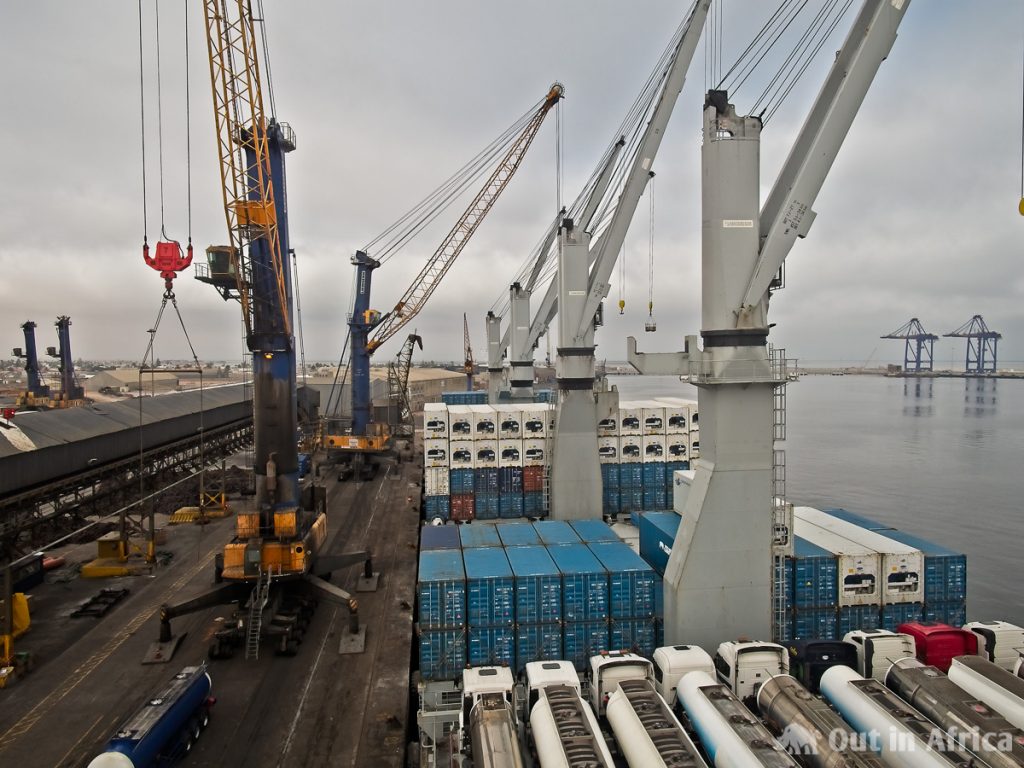
It’s a soft landing. The pilot, the Chief Officer, the linesmen and of course the crew on the winches are perfectly coordinated. Without a rumble, we lie on the old tractor tyres attached to the quay wall.
Further anchor ropes are pulled ashore with the help of the thin lines. There are no winches like in Hamburg or Antwerp. The three linesmen and women have to draw the heavy rope ashore.
A sailor hoists the Namibian flag.
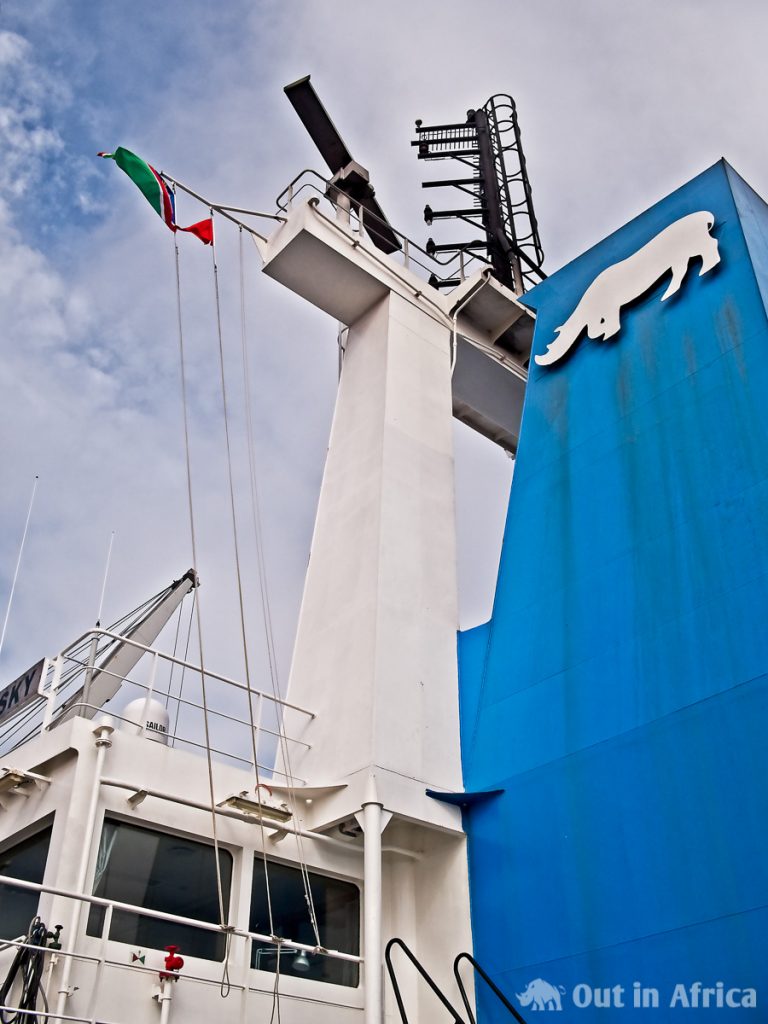
Another sailor has meanwhile detached the gangway and hoists it up to the poop deck with a crane. His colleagues below attach it to the railing and lower it to the dock.
We’ve docked.
The pilot says goodbye and goes down the gangway shortly after.
By the way, the pilot was Russian. The Captain says that there is a robust Russian enclave here and that most of the pilots are Russians.
The first thing I do in my cabin is to exchange the SIM card in my smartphone with my Namibian card. Now I can use WhatsApp. I didn’t miss the internet that much during the trip unless Pierre and I discussed something that could have quickly been clarified with Google. But now I have WhatsApp again, and that’s great.
At breakfast, a lady from customs comes on board. Of course, Robert offers her breakfast, but no, she wants to check the bottle store. I call it a bottle store, but it is a room on the ship where things are stored that only the Captain is allowed to sell, such as liquor and cigarettes. Since we spent most of our time outside any territorial waters, the goods are duty-free. The lady from customs wants to check this warehouse first of all. She is not interested in what anyone has in their luggage.
I also meet the shipping company’s port agent at breakfast. He will help me get my luggage to the port gate tomorrow. My sister-in-law is not allowed to go into the harbour area.
The unloading of the cargo begins. Sunday or no Sunday – a port never sleeps. Cranes are pulled up, and the first English trucks are already floating in the air.
Immigration is barely through when Pierre leaves the ship. He still has a full program here in Walvis Bay and surroundings before he flies on to Madagascar. I go down the gangway with him, enter the cracked concrete of the port of Walvis Bay and make my first step in Namibia.
Even if Pierre and I did not agree on some things, he was an excellent travel companion. We hug each other warmly to say goodbye. I will miss him.
I miss him already at lunch on the other side of the table.
After lunch, there is a safety exercise, but I don’t have to take part in it. I go anyway because it is getting exciting. Now that we are in the calm harbour, the crew checks whether the davit for the small lifeboat is working. The boat is lowered to the water once with three men in it.
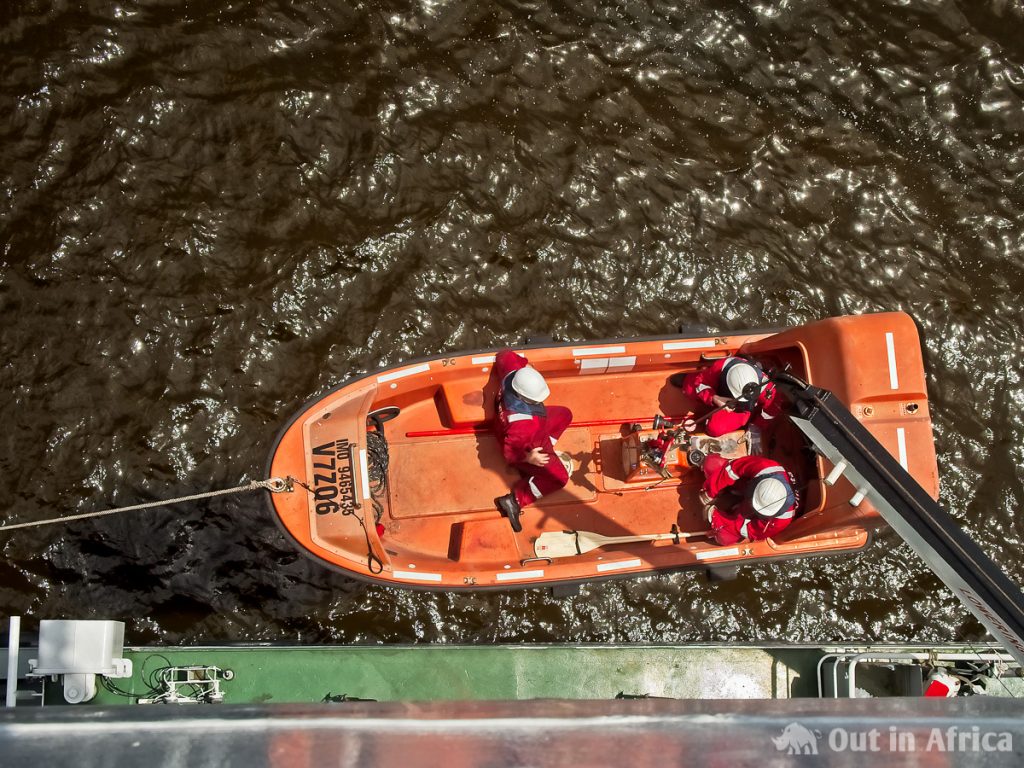
Next, the big lifeboat is checked to see if the release mechanism works. To do this, the boat first has to be attached to a crane. After all, it should not fly down six storeys into the water. The Third Officer then climbs in and activates the release mechanism. It works as it should. Everyone is satisfied.
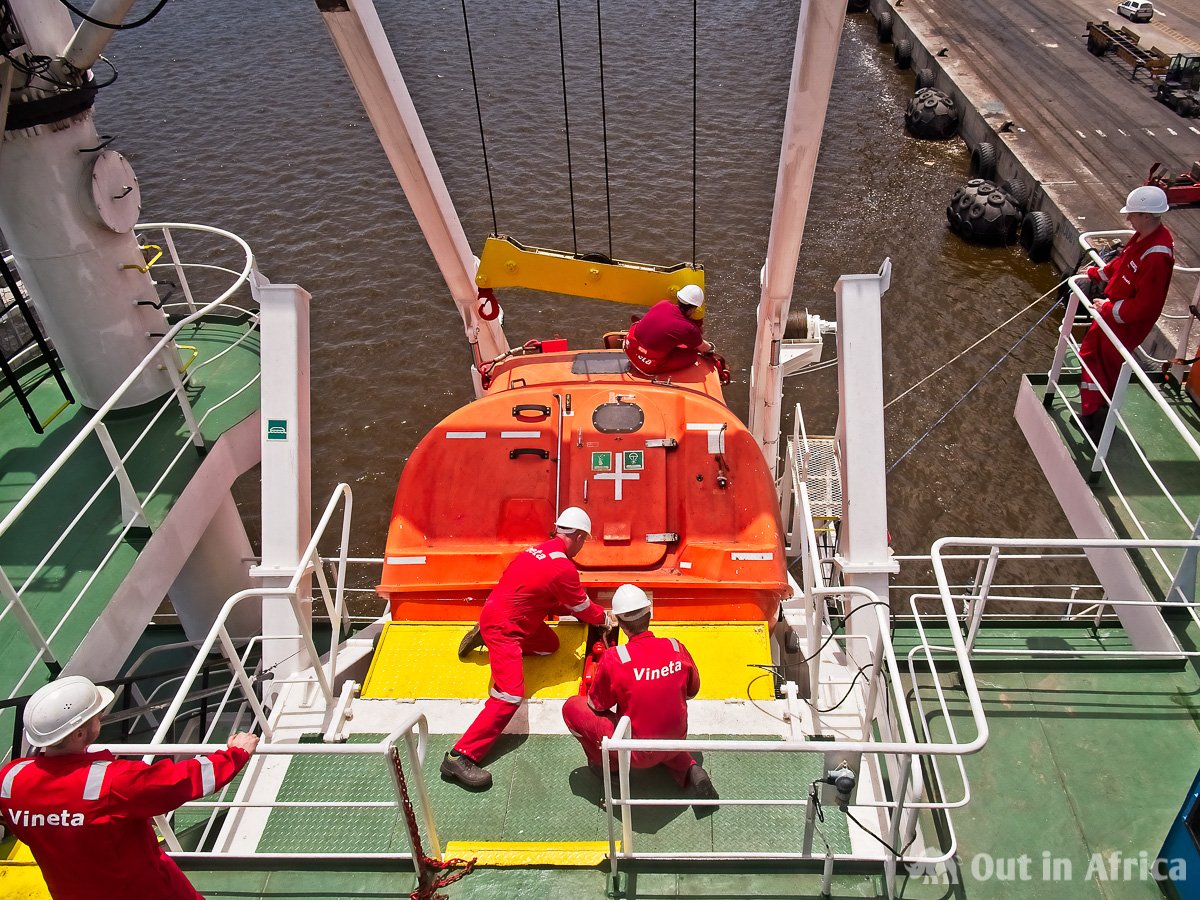
The afternoon’s confused. I want to take a nap, but then I don’t feel like it. I want to pack my suitcases, but there is still a lot to do before I pack, e.g. sorting photos.
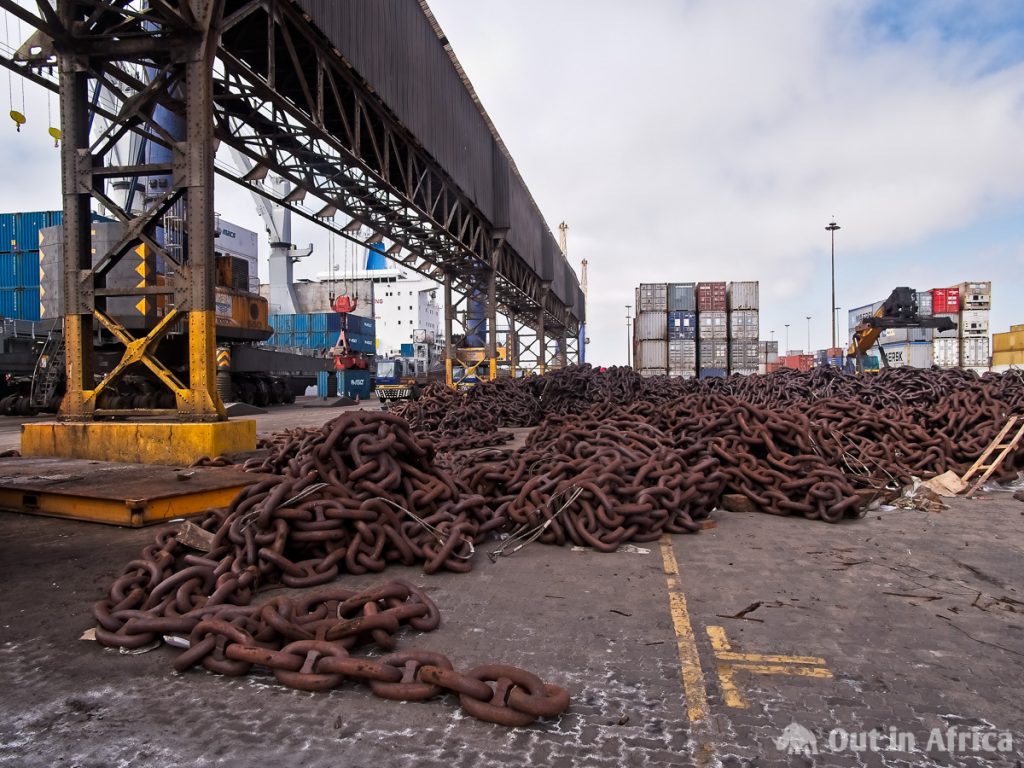
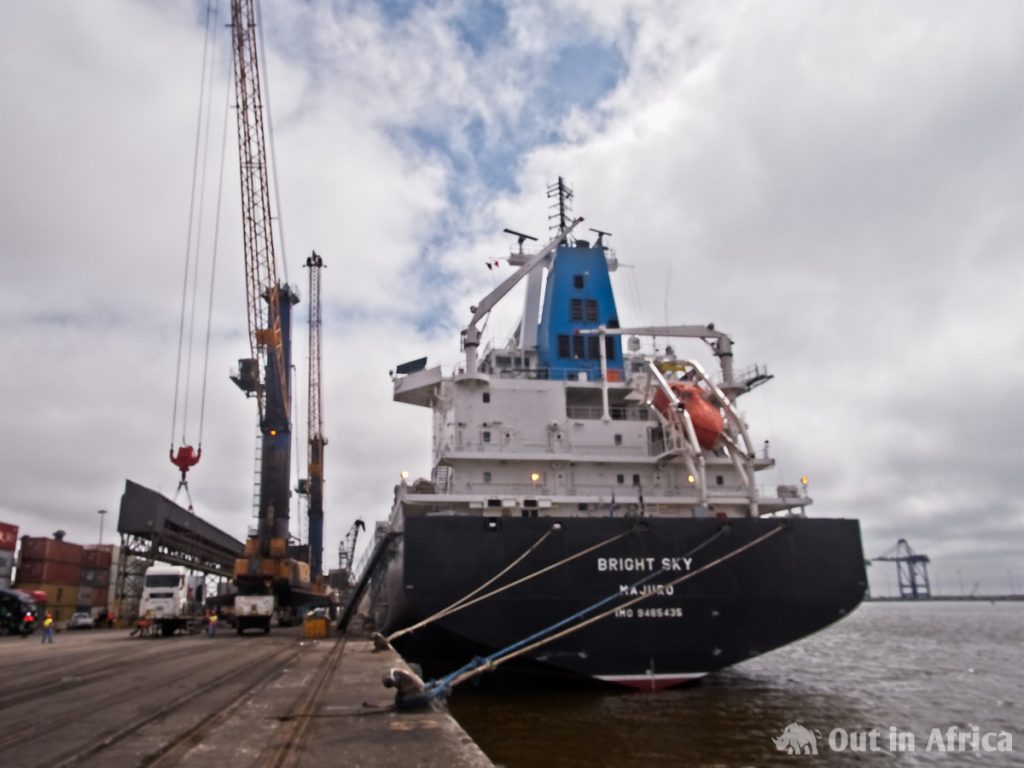
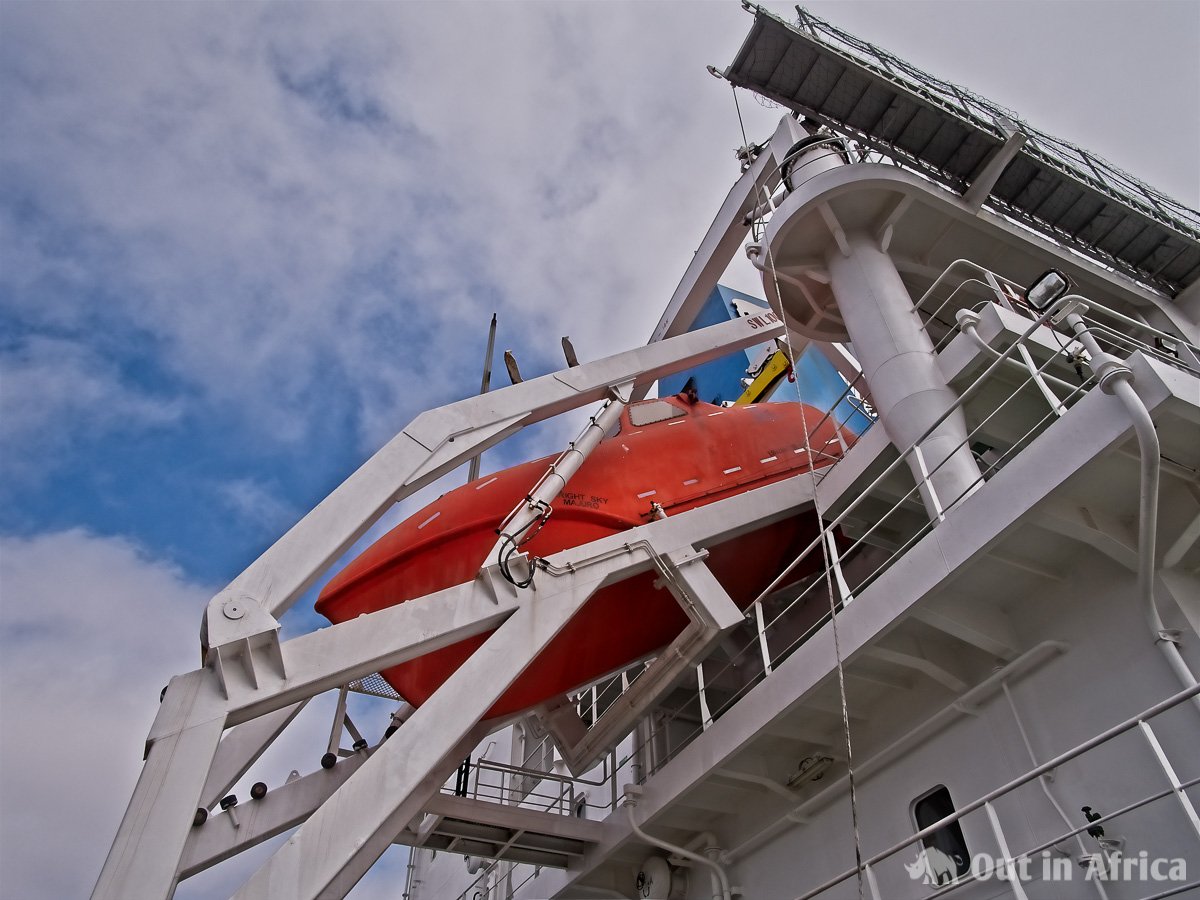
Finally, I go ashore. I walk around the dock a little and take photos. I have been on the Bright Sky for four weeks now and could never see it from the outside. It’s also impossible to look at the ship as a whole in port, with all the port cranes, containers and unloaded trucks standing around. So I’m glad to have photographed the Golden Karoo, the sister ship, the day before.
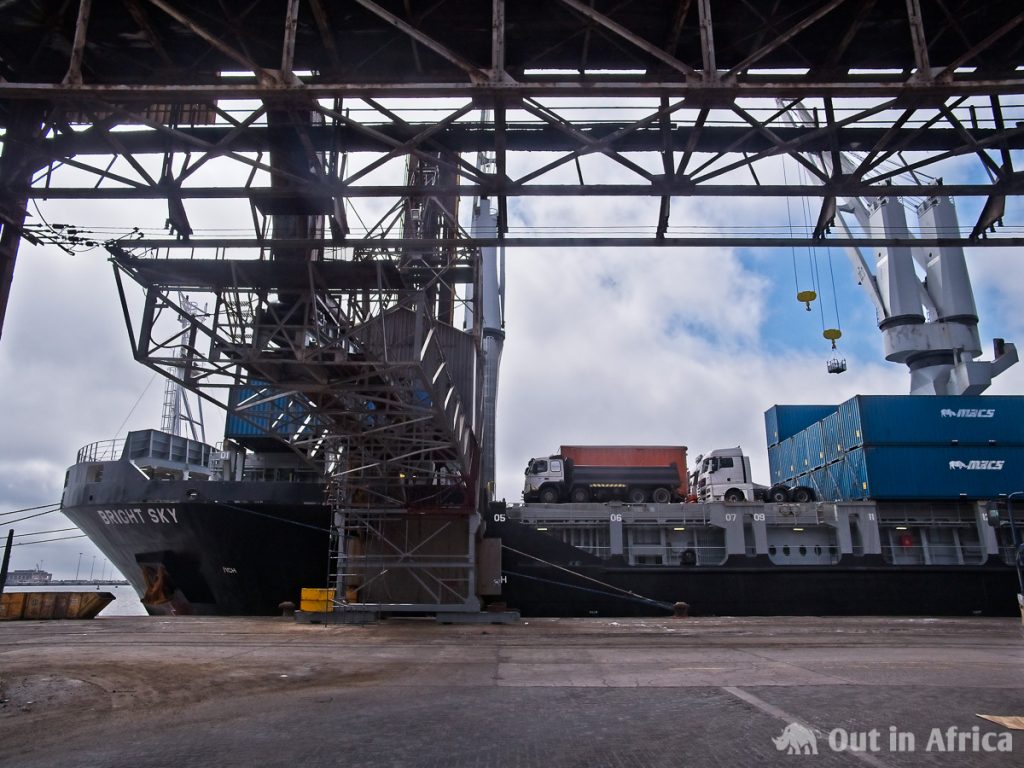
I look up to the bridge, on whose balconies I photographed the sun every morning and every evening. I go forward to the bow and look up at the tip of the ship, where I have stood for hours, seen flying fish, birds and dolphins or simply looked over the sea, over the light on the water, at the waves.
Finally, I watch the English trucks being unloaded.
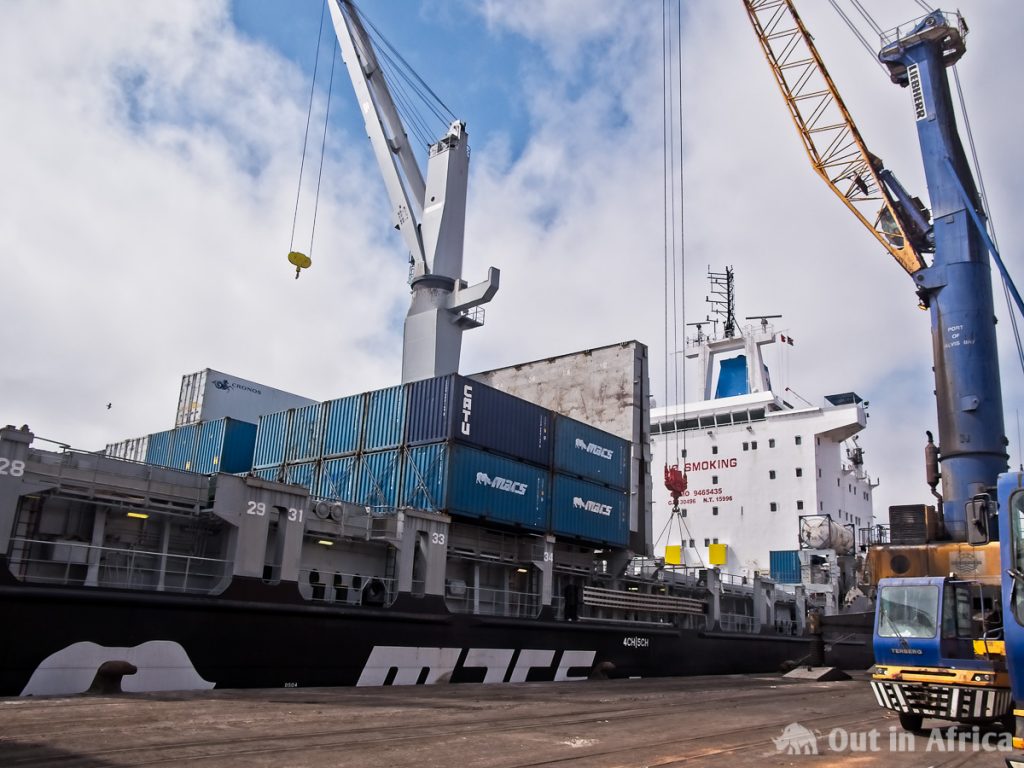
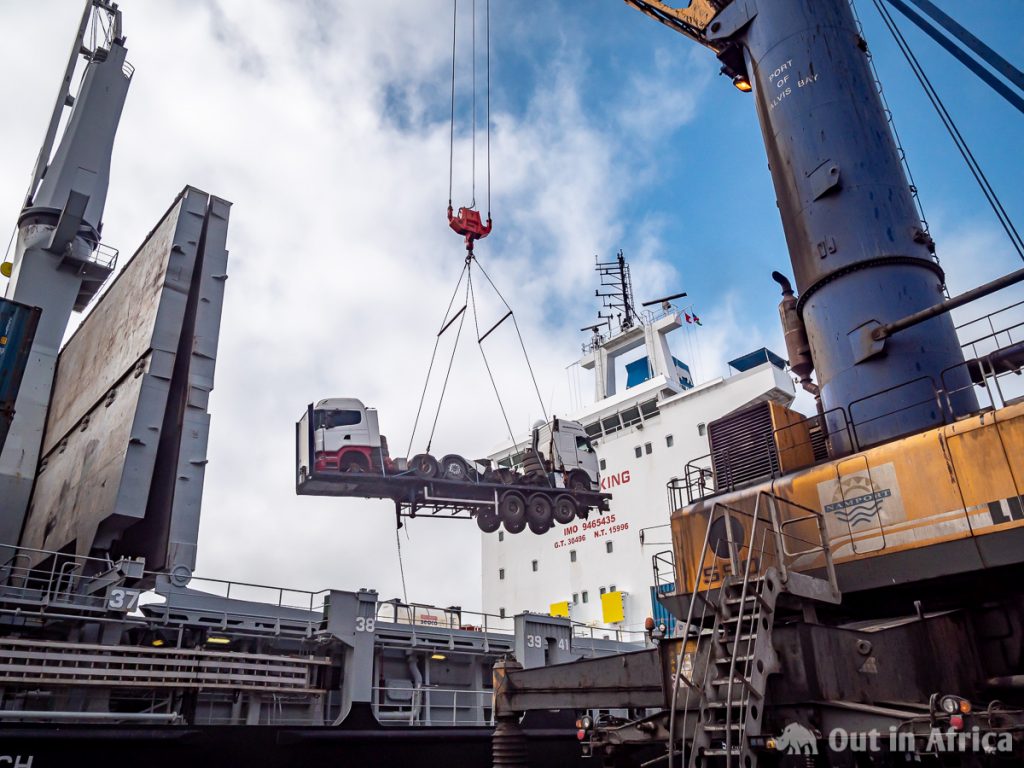
Back on board, I continue with my photos. I miss the flying fish. I have thousands of pictures of them on my hard drive, but I don’t have them themselves, except in my memories. I want to get out again and photograph flying fish.
After a lonely dinner without Pierre and without the Captain and his wife, I begin to pack seriously. Somehow there is still a lot of room everywhere. I think about whether I forgot something, look again into all cupboards and drawers. But they are empty. Some things are still in use, like charging cables. I can’t pack everything and continue with photos of flying fish.
I think that I finally arrived in Namibia. I am ready to leave the Bright Sky tomorrow and start my new phase of life in Namibia. But I am also still too close to the sea and the ship and the people on the ship, too close to the extraordinary last four weeks. I am in Limbo.
Would you like to see an overview of all articles about my journey on the cargo ship Bright Sky? Click here for a table of contents.
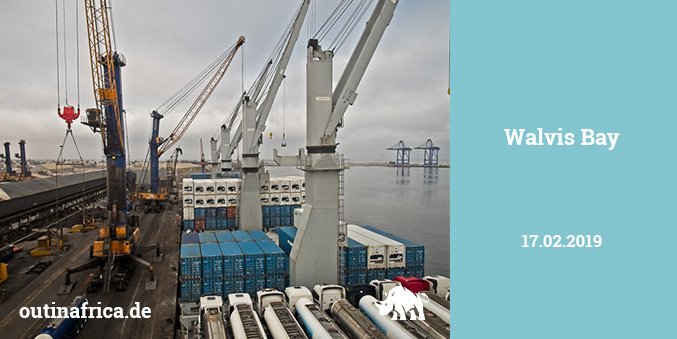
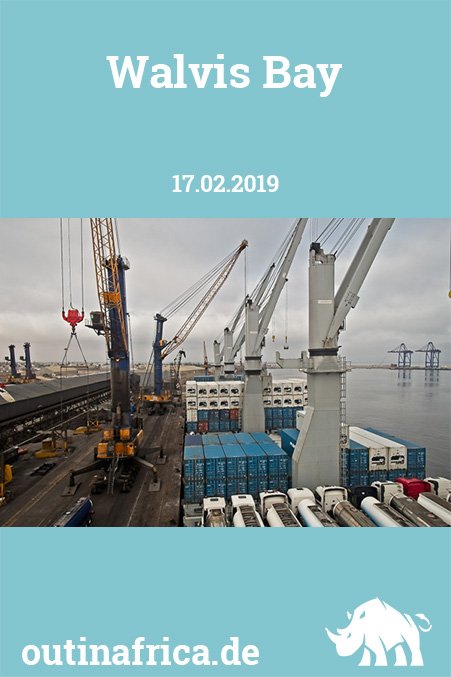

Leave a Reply